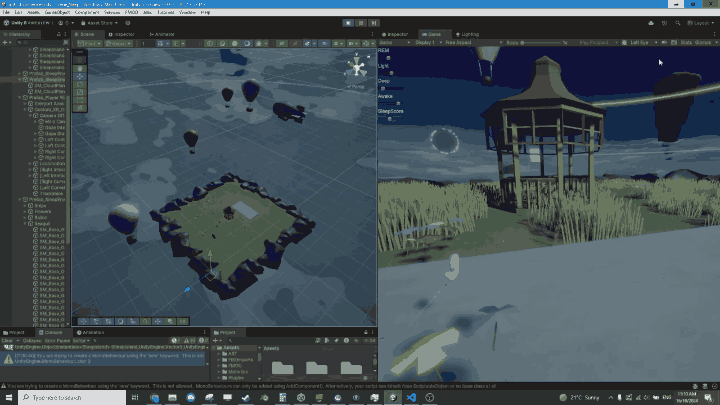Week 6: 14th Oct – 18th Oct
This week, I focused on creating and implementing the Sleep Concept, a key part of our VR experience that visualizes sleep data in an interactive and immersive way. The concept combines environmental storytelling with dynamic data representation, allowing users to explore their sleep metrics intuitively.
Sleep Concept Overview
The design centres on a collection of seven floating islands, each representing a day of sleep data from the past week. The player starts on a central island, surrounded by these floating islands, and can select an island to view its associated data. Upon selection, the environment transforms to reflect the data points for that particular day.
Key features of the concept include:
- Dynamic Environment Changes: The environment reacts to the selected island’s sleep data, providing visual cues for different metrics such as skybox brightness, grass density, birds in the sky, and playful elements like balloons and sheep.
- Sleep Consistency Representation: The size of each floating island corresponds to the total sleep duration for that day, while its vertical position reflects the time the user went to bed and woke up. Lines in the environment indicate the optimal sleep range, helping users visually gauge their sleep consistency.
Development Progress
This week, I implemented the core features of the concept, including:
- Dynamic Environment Changes: Integrated skybox, grass density, and other environmental effects to reflect the data points dynamically.
- Island-Based Representation: Created a system to adjust island size and height based on sleep duration and consistency.
- Interactive Selection: Enabled the player to select and focus on specific islands, triggering the corresponding environment changes.
These features make the Sleep Concept both visually appealing and informative, aligning with our goal of making health data engaging and easy to understand.

Reflections
This week was rewarding as the Sleep Concept came to life, showcasing how VR can be used to translate abstract health metrics into tangible, interactive experiences. While the core features are functional, there’s still room for refinement and polish, especially in integrating additional environmental details and optimizing performance for standalone VR.
